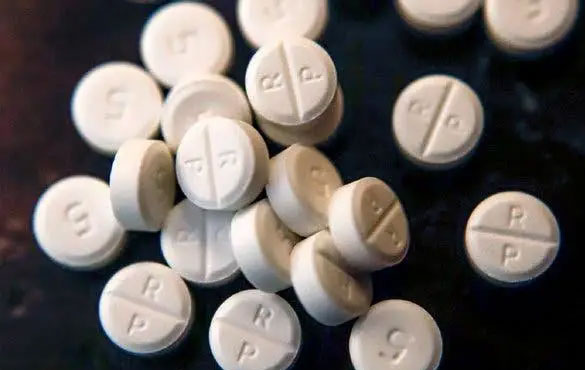-
 Tiasha Ferguson
★★★★★
3 weeks ago
Tiasha Ferguson
★★★★★
3 weeks ago
I didn't even know I wanted recovery until I tasted freedom. The dedicated and qualified staff guided me through the darkness and helped me find the light. After 16years of addiction, I finally built a solid foundation of recovery. … More I'm just over one year clean/sober and still counting. I couldn't have done it alone. To those struggling help is available - reach out and find meaning and purpose again - you're worth it ♡
-
 Bella Carrig
★★★★★
6 months ago
Bella Carrig
★★★★★
6 months ago
Seasons didn’t just save my life, it gave me a life beyond my wildest dreams. I’m celebrating 10 months clean, starting a traineeship in the next few weeks and Studying part time (doing really well in that aswell.) I have a relationship … More with my family that’s better than I’ve ever had, and I’m mentally, physically, emotionally and spiritually healed and growing everyday. Thankyou Seasons. The team here are fantastic.
-
 Nicola Kirkbride
★★★★★
a year ago
Nicola Kirkbride
★★★★★
a year ago
Such an amazing rehabilitation centre, I am so grateful to the staff and the programme here, with their help I have managed to completely turn my life around. I highly recommend Seasons to anyone struggling with addiction, I felt safe and … More cared for at all times during my stay here and will be for ever grateful to all of the staff at Seasons. Committing to the programme at Seasons was one of the best decisions I’ve ever made.
-
 James Ireland
★★★★★
a year ago
James Ireland
★★★★★
a year ago
Seasons saved my life.
5 Star doesn’t do it justice. 10 STARS
I went to seasons for 28 days in December 2021.
I would have stayed 3 months but financially that wasn’t an option.
All the staff and education were amazing. With international … More accreditations this is undoubtedly one of the best on Bali if you WANT to get clean and sober and stay that way.
Not just the professional councilors we’re amazing but the medical support team( picking me up and checking me out pre admittance) looking after all the clients 24 hours.
Drivers, housekeeping, cooks & the support workers were there for us day & night.
If you want an introduction to 12 step recovery & immediate integration to Bali Fellowship I can’t recommend Seasons team enough.
My story was 2 years pre admittance due to Covid, but from my 1st contact 6 months pre admittance to this day I receive ongoing support from the client liaison team.
I have been back to support others in recovery, am always welcome and look forward to going back to help others with there journey soon.
I just celebrated 6 months and my journey started at Seasons.
I’m really upset by recent negative reviews and felt called to share my truth.
12 STEP Recovery introduction doesn’t get better than this.
See you all for a Coconut Soon !
-
 Hazel Donoghue
★★★★★
3 years ago
Hazel Donoghue
★★★★★
3 years ago
Came here in April 2021, this place literally saved my life. Done 3 months treatment, followed by 3 months transition which I have almost completed. I’ve seen the lives of so many people change here.. if you can afford it I really recommend … More completing 90 days as this certainly has the best success rate.. The staff are all lovely, good educational groups, yoga and gym, meditation.. 100% all round treatment for your mind, body and soul. Met some lifelong friends as well, wouldn’t hesitate to recommend this to anyone. Richard and his excellent team have all been so supportive and I am very grateful to have had this opportunity to turn my life around.
-
 Michelle Burrows
★★★★★
a year ago
Michelle Burrows
★★★★★
a year ago
A fantastically welcoming team of professionals that deeply care about each client’s recovery. I was so impressed by the staff’s accumulated years of experience & recovery shares that resulted in a balanced and unique knowledge base … More from individuals that have actually been through the whole healing process themselves.
The Seasons is ideally located right on the beach that affords clients the space & tranquillity needed to heal. A well thought out program involving counselling, meditation, yoga, great education, AA/NA meetings, & weekend activities.
If you are looking for a rehab that cares about your wellbeing both during treatment and after you have left, then I would fully recommend this beautiful setting where you can solely focus on yourself, your mind, your body & spirit, the Seasons Clinic, Bali.
-
 RW
★★★★★
3 months ago
RW
★★★★★
3 months ago
Amazing staff and location. Could not be happier. So grateful for the experience.
-
 Catherine Remaj
★★★★★
3 years ago
Catherine Remaj
★★★★★
3 years ago
To: Seasons Rehab Bali....January 2019, my daughter was a everyday user of The Evil Drug 'ICE' .... My daughter was on the brink of Death, it was either send her to rehab, or arrange a funeral. I have had family friends that have … More been to Seasons Rehab, all with outstanding success. So we arranged for our daughter to go to Bali ASAP. Seasons Rehab is outstanding in every area. The facility is just like a 5 star resort. The staff are just outstanding and so very supportive to my daughter and to us. The program is amazing, the guidance and counselling is of top class level. The Transition House, is the facility to help the clients adjust to living in the mainstream of society. Seasons Rehab arranged a support worker to travel with our daughter to Australia in September for support to us in the time of need.October 2019, my daughter has now completed 10 months at Seasons Rehab. My daughter is so confidence, so grateful, clean and sober, so much of a better person. The ongoing support, is outstanding, phone calls etc with her sponsor and support staff daily...We will be forever grateful that Seasons Rehab 'Saved our Daughters Life' ...AMAZING !!!We have our Daughter Back ❤️❤️❤️SEASONS REHAB BALI ..."YOU ROCK " ....
-
 Mikel Merino
★★★★★
3 years ago
Mikel Merino
★★★★★
3 years ago
My wife and I attended the couple program in late 2019. We are both working professionals and found that our use of alcohol had begun to affect our lives in ways that we weren't comfortable with. I guess we were both nervous about … More attending and didn't know who we were going to meet. From the moment we arrived, we were greeted by warm smiles and a ton of compassion. It was an incredible relief to meet people who were in the same boat as us and be guided by people who were in the boat but now safe on dry land. Giving up alcohol has been one of the hardest things I have had to do but now I am free, I cant express the joy that we both feel.Yesterday my wife and I sat on the beach and just watched the sun go down. That was something we would have never considered before. The staff at Seasons are really something else. They were like celestial beings to us. The food is wonderful and the place has a great energy. I loved the white water rafting. My wife loved the art therapy and local cultural events. We always thought rehab would be white hospital walls and people in white coats. Seasons proves that it doesn't have to be clinical. We met incredible people and had a challenging but utterly rewarding and blissful awakening!
-
 tommy C
★★★★★
3 years ago
tommy C
★★★★★
3 years ago
Seasons Bali has helped me to change my life around. Without the help of seasons I wouldn’t be the person I am today. The staff members are more than amazing, the accomodation is lovely and the aura of the whole place is nothing short of … More magical. Highly recommend to anyone seeking to overcome addiction and alcoholismRooms: 5/5 | Service: 5/5 | Location: 5/5 …More
-
 Mrs Smith
★★★★★
2 years ago
Mrs Smith
★★★★★
2 years ago
Seasons Bali is very accountable rehabilitation facility who can help us to reach our goals in recovery/sobriety , they have professional staff who’s been experiencing recovery them self .They know what they doing that’s the important … More part of this rehab .Located it right on the beach, you can enjoy the sunset with some coconut , or do some catching sunrise in the morning on the boats .Seasons Bali is provide the best service you can ask for .
-
 Jodi Rudolph
★★★★★
a year ago
Jodi Rudolph
★★★★★
a year ago
Excellent program to get your life turned around. Beautiful setting, incredible food and a very caring staff that looks out for you. Highly recommend!
-
 steve hopwood
★★★★★
3 years ago
steve hopwood
★★★★★
3 years ago
My name is Steven i arrived at seasons Bali in 2016, i had been in active addiction for 20 years. I started my carpentry apprenticeship when i was 16 and from that moment on drugs and alcohol seemed to be part of my toolbox. What i started … More to notice from very early on that other people that i associated with could pull up after a big weekend and not have to use or drink through the week like i did, i needed a substance to get through daily life and if i did not i was left feeling uneasy and discontent. Many years went by and did not think i had a problem as i was working running my own construction company that was very successful earning a lot money. In 2002 i started using meth amphetamine on a daily basis for almost 14 years i found my life revolved around going to work on drugs to get money to get more drugs, what i found out later on when i arrived at seasons Bali is that i was caught in the cycle of addiction and needed help. My sister and my mother paid for me to go as i was broke and broken , for once in my life i was at a place where i could take some time out and get the help i needed, all of the support staff had once been in addiction themselves so they understood what i was going through. After about two weeks i had detoxed and they showed me how i could live and enjoy life without the use of drugs and alcohol. at the end of my 90 day program i had a much more clear outlook on life and felt hopeful for once, i am now 3 years clean and sober and life could not be better i have achieved goals, been on holidays, and have awesome new hobbies life is great and i am grateful to the crew at seasons and i make it a point to stop in every year to show my gratitude and give hope to other clients.
-
 tamantha cogo
★★★★★
3 years ago
tamantha cogo
★★★★★
3 years ago
My husband went to Seasons on June 2019 a broken man, a man who had ran out of reasons to breath. He had lived 30years of his 43year struggling with addiction and mental health associated with addiction. He was withdrawn, angry, unmotivated … More and sad 100% of the time.Our marriage was over we were both just existing in a loveless life.There had been so much damage done over the 28years that we had been together and so many attempts at change that Season was just our last shot before we excepted that we would need to go our separate and that addiction would rob my husbands of his happiness, his children and his willingness to breath.Wow...????????????????Is one word that comes to mind..What Seasons has done for my husband and our family has been so much more than we could ever have dreamt of.The level of commitment and support given to my husband made him feel safe allowing him to get clean and sober after 30years.My husband has now been clean and sober 7 months, his found his smile, his humour and most importantly he likes himself!Thank you Seasons ????I will forever be grateful.
-
 coolbeans lopp
★★★★★
3 years ago
coolbeans lopp
★★★★★
3 years ago
Seasons helped me hit the reset button on my life and what had been a five year long chain of drug dependency. Seasons freed me and I have been able to stay free of drugs since completing the program because of what I learned there and … More how the Counselors helped me feel. It was a transformative experience and I am so grateful I had it.
-
 Kym Richardson
★★★★★
a year ago
Kym Richardson
★★★★★
a year ago
Just completed the 90 day program and am so grateful for all the staff. The program is extremely effective and the facilities are great. I would recommend to anyone that is struggling with addiction.
-
 Natasha Howell
★★★★★
3 years ago
Natasha Howell
★★★★★
3 years ago
It wasn't until I got to Seasons that I realised the extent of my issues. Seasons Bali and staff have saved my life. I have developed tools that I have taken outside to allow me to live and continue living a healthy and happy life. … More
-
 CHICHI AMALIA
★★★★★
6 months ago
CHICHI AMALIA
★★★★★
6 months ago
seasons is the best place to help individuals struggling with addiction find the tools and knowledge that will give them the best chance of achieving recovery.
-
 anjani
★★★★★
3 years ago
anjani
★★★★★
3 years ago
I truly blessed to found this rehab. They help me with my addiction . They show me a new way to live without drugs and alcohol. Great program and amazing worker. Thank you so much from the bottom of my heart ♥️????♥️
-
 Lachlan O'Donoghue
★★★★★
3 years ago
Lachlan O'Donoghue
★★★★★
3 years ago
Without seasons I wouldn’t be here.The staff there are one of a kind and they helped me through my journey with a kind heart and a wealth of knowledge. Mr. Ahearn was especially helpful as he could connect with me on such a mutual level, … More his understanding and detailed advice was something I’ll always hold onto.Would highly recommend!
-
 j k
★★★★★
3 years ago
j k
★★★★★
3 years ago
Seasons Bali saved my life.I have been to many other rehabs and psychiatric hospitals.Nothing worked before seasons.My family and I are forever grateful.
-
 D.A Draper
★★★★★
3 years ago
D.A Draper
★★★★★
3 years ago
Highly recommend Seasons Bali. Saved my life, the amazing staff made it better than I could have expected, 3month program changed my life, it was an amazing experience.
-
 Jesse Strobel
★★★★★
3 years ago
Jesse Strobel
★★★★★
3 years ago
Couldn't thank the team here at Seasons enough for all of their hard work and dedication to the cause. Professional and friendly all of the way! Jack in particular made my stay a lot better 😀
-
 Lia lestari Saputri
★★★★★
2 years ago
Lia lestari Saputri
★★★★★
2 years ago
thank u so much guys, for helping me to face the reality. and showed me that life is beautiful without drugs and alcohol. I will continue to do my best for my recovery ❤
-
 asty smith
★★★★★
5 years ago
asty smith
★★★★★
5 years ago
The staff was friendly, very helpful, and cared. The family program was so helpful to understand the feeling of our love ones , to know who we deal with and how we deal .
-
 Robert Stripling
★★★★★
6 years ago
Robert Stripling
★★★★★
6 years ago
World class accommodation, professional/friendly staff and good food! Daily outings, along with consistent peer and staff support. Can't think of anywhere else I would rather go
-
 ricky sw
★★★★★
6 months ago
ricky sw
★★★★★
6 months ago
Perfect place for recovery with awesome nurse and staff. Really recommended ????????




